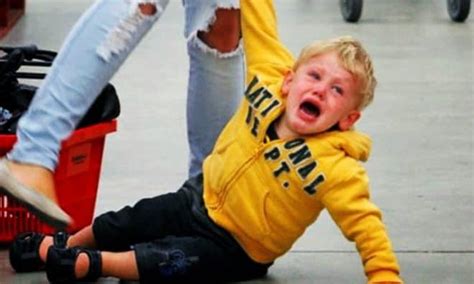
A tabby cat named Bowie is captivating the internet with his unwavering focus during scheduled playtime, as showcased in a viral video that has garnered millions of views. The video, highlighting Bowie’s intense concentration and agility, has turned the feline into an overnight sensation, sparking discussions about the importance of structured playtime for indoor cats and the unique personalities of our feline companions.
The now-viral video, initially shared on TikTok by Bowie’s owner, shows the tabby meticulously stalking, chasing, and pouncing on a laser pointer dot with an almost unsettling level of dedication. “He takes his scheduled playtime VERY seriously,” the video caption reads, perfectly capturing the essence of Bowie’s performance. The video quickly spread to other platforms, including X (formerly Twitter) and Instagram, amplifying its reach and solidifying Bowie’s status as a viral sensation. The clip’s widespread popularity underscores the internet’s fascination with animal antics, particularly those that highlight the quirky and endearing behaviors of cats.
Bowie’s owner, who prefers to remain anonymous, notes that the scheduled playtime is a crucial part of Bowie’s daily routine, designed to provide him with the physical and mental stimulation he needs as an indoor cat. “We started scheduling playtime for Bowie when we noticed he was getting restless and bored,” she explained. “It’s made a huge difference in his overall well-being. He’s much calmer and more content.” This structured approach to playtime has resonated with many cat owners who are seeking ways to enrich their pets’ lives within the confines of an indoor environment.
The video’s virality has also sparked broader conversations about responsible pet ownership and the importance of understanding and catering to the specific needs of different cat breeds and personalities. Experts suggest that scheduled playtime can help prevent behavioral issues stemming from boredom or lack of exercise, such as destructive scratching or excessive vocalization. Moreover, it strengthens the bond between cat and owner, fostering a deeper sense of trust and companionship.
The comments sections across various social media platforms are flooded with admiration for Bowie’s focus and playful energy. Many users have shared their own experiences with scheduled playtime for their cats, highlighting the positive impact it has had on their pets’ lives. Others have expressed amusement and amazement at Bowie’s almost human-like dedication to the game, with some jokingly comparing him to an Olympic athlete in training.
The phenomenon of Bowie’s viral playtime underscores the power of social media to connect people through shared experiences and a collective appreciation for the unique charm of animals. It also serves as a reminder of the importance of responsible pet ownership and the positive impact that simple, structured activities can have on the well-being of our beloved companions. The video’s success is a testament to the internet’s endless appetite for heartwarming and amusing content, particularly when it involves animals exhibiting relatable and endearing behaviors.
In-Depth Analysis:
The appeal of Bowie’s viral video lies in several factors. First, the cat’s unwavering focus is inherently amusing. The intensity with which he pursues the laser pointer dot, a simple source of visual stimulation, is both captivating and slightly absurd. This resonates with viewers because it taps into our understanding of animal instincts and the inherent playfulness of cats.
Second, the concept of “scheduled playtime” adds another layer of intrigue. It suggests a level of dedication and commitment from the owner that is both admirable and relatable. Many pet owners struggle to balance their own lives with the needs of their animals, and the idea of carving out specific time for play is a practical solution that many can appreciate.
Third, the video highlights the importance of environmental enrichment for indoor cats. Unlike their outdoor counterparts, indoor cats lack the natural stimulation of hunting, exploring, and interacting with other animals. Scheduled playtime provides a structured way to compensate for this lack of stimulation, preventing boredom and behavioral issues.
Furthermore, the video’s success can be attributed to the inherent appeal of cats in general. Cats have long been a staple of internet content, known for their quirky personalities, amusing behaviors, and photogenic qualities. Bowie’s video capitalizes on this pre-existing fascination, offering viewers a glimpse into the unique world of feline play.
The use of a laser pointer as a play tool also deserves attention. While laser pointers can be effective for stimulating a cat’s hunting instincts, they also have potential drawbacks. Some experts warn that prolonged use of laser pointers can lead to frustration in cats, as they are never able to physically catch their prey. This can result in anxiety or other behavioral issues. However, when used in moderation and followed up with a tangible reward, such as a toy or treat, laser pointers can be a safe and effective way to provide exercise and mental stimulation.
The broader implications of Bowie’s viral video extend to the field of animal behavior and welfare. It underscores the importance of understanding the specific needs of different animal species and the role that environmental enrichment plays in promoting their well-being. As more people keep pets indoors, it becomes increasingly important to provide them with opportunities to engage in natural behaviors, such as hunting, exploring, and socializing. Scheduled playtime is just one example of how this can be achieved.
Background Information:
The trend of scheduling playtime for pets is growing, driven by increased awareness of animal welfare and the recognition that indoor pets require structured activities to thrive. Many pet owners are turning to online resources, such as blogs, forums, and social media groups, to learn about the best ways to enrich their pets’ lives. These resources often provide tips on creating stimulating environments, introducing interactive toys, and implementing training programs.
In addition to scheduled playtime, other forms of environmental enrichment for cats include providing scratching posts, climbing structures, puzzle feeders, and opportunities for social interaction. The specific needs of each cat will vary depending on its age, breed, personality, and health status. It is important for owners to observe their cats’ behavior and adjust their enrichment strategies accordingly.
The rise of pet technology has also contributed to the growing trend of scheduled playtime. Automated toys, such as robotic mice and interactive feeders, can provide cats with stimulation even when their owners are not at home. These devices can be programmed to operate on a schedule, ensuring that cats receive consistent playtime throughout the day.
Moreover, the veterinary community is increasingly recognizing the importance of behavioral health in overall pet wellness. Veterinarians are now more likely to screen for behavioral issues during routine checkups and to recommend behavioral modification techniques to address problems such as anxiety, aggression, and destructive behaviors. Scheduled playtime can be an important component of a comprehensive behavioral management plan.
The economic impact of the pet industry is also worth noting. Pet owners are increasingly willing to spend money on products and services that enhance their pets’ lives, including toys, treats, and enrichment devices. This has fueled the growth of the pet industry and created new opportunities for entrepreneurs to develop innovative products and services that cater to the needs of pet owners.
Expanded Context:
The concept of scheduled playtime aligns with broader trends in animal care that emphasize preventative health and well-being. Just as humans benefit from regular exercise and mental stimulation, so too do animals. By providing structured opportunities for play, pet owners can help prevent a wide range of health and behavioral problems.
The benefits of scheduled playtime extend beyond physical and mental health. Playtime also strengthens the bond between cat and owner, fostering a deeper sense of trust and companionship. During playtime, cats and owners engage in reciprocal interactions, such as chasing, pouncing, and grooming. These interactions reinforce the social bond and create positive associations.
The video of Bowie’s intense playtime also raises questions about the ethics of using certain types of toys, such as laser pointers. While laser pointers can be effective for stimulating a cat’s hunting instincts, they also have the potential to cause frustration and anxiety. Some experts argue that the lack of a tangible reward can lead to a sense of incompleteness in cats, which can manifest as behavioral problems.
It is important for pet owners to be mindful of these potential drawbacks and to use laser pointers responsibly. One strategy is to follow up the laser pointer session with a tangible reward, such as a toy or treat. This can help satisfy the cat’s hunting instincts and prevent frustration. Another strategy is to limit the duration of laser pointer sessions and to avoid using them as the sole form of playtime.
The video’s virality also highlights the power of social media to shape public opinion and influence consumer behavior. The positive response to Bowie’s scheduled playtime has likely inspired many pet owners to adopt similar strategies. This underscores the importance of using social media responsibly and promoting accurate information about animal care.
Furthermore, the video’s success can be seen as a reflection of broader cultural trends that emphasize the importance of animal welfare and the human-animal bond. As more people recognize the emotional and social value of pets, they are increasingly willing to invest time and resources in their care. This trend is likely to continue in the coming years, driving innovation and growth in the pet industry.
The story of Bowie’s viral playtime serves as a reminder of the simple joys of pet ownership and the importance of providing our animal companions with the love, care, and enrichment they need to thrive. It also highlights the power of social media to connect people through shared experiences and a collective appreciation for the unique charm of animals. By sharing stories like Bowie’s, we can inspire others to become more responsible and compassionate pet owners.
Quotes:
- “He takes his scheduled playtime VERY seriously,” – Bowie’s owner, in the TikTok video caption.
- “We started scheduling playtime for Bowie when we noticed he was getting restless and bored,” – Bowie’s owner.
- “It’s made a huge difference in his overall well-being. He’s much calmer and more content,” – Bowie’s owner, regarding the impact of scheduled playtime.
Frequently Asked Questions (FAQ):
Q1: What is scheduled playtime for cats, and why is it important?
A1: Scheduled playtime refers to dedicating specific times each day for engaging in interactive play with your cat. This is crucial, especially for indoor cats, as it provides them with the physical exercise and mental stimulation they need to prevent boredom, reduce stress, and address potential behavioral issues arising from a lack of activity. Scheduled playtime mimics the hunting behaviors cats are naturally inclined towards, satisfying their instincts and keeping them happy and healthy. It also reinforces the bond between you and your feline companion, establishing a deeper connection and creating positive interactions. Consistent playtime helps maintain a cat’s physical fitness, preventing obesity and related health problems, while mental stimulation can improve cognitive function and alertness.
Q2: What are some effective ways to implement scheduled playtime with my cat?
A2: There are several ways to effectively implement scheduled playtime with your cat:
- Consistency: Choose a specific time of day when you can consistently dedicate 15-30 minutes to play. Cats thrive on routine.
- Variety of Toys: Use a mix of interactive toys, such as feather wands, laser pointers (used responsibly), toy mice, and puzzle toys. Different toys engage different instincts.
- Simulate Hunting: Mimic the hunting sequence of stalk, chase, and capture. Allow your cat to “catch” the toy at the end of the session to satisfy their predatory drive.
- Engage Their Senses: Rotate toys regularly to keep your cat interested. Toys with different textures, sounds, and smells can provide novelty and excitement.
- Follow Their Lead: Pay attention to your cat’s preferences. Some cats prefer fast-paced chase games, while others enjoy more subtle stalking and pouncing.
- Positive Reinforcement: Use praise and treats sparingly after playtime to create positive associations. This encourages them to participate enthusiastically in future sessions.
- End on a High Note: Finish the playtime session while your cat is still engaged, leaving them wanting more. This makes them more likely to be receptive to the next session.
- Observe Their Body Language: Watch for signs of fatigue or overstimulation. Cats can become easily overwhelmed, so it’s essential to end playtime before they become stressed.
Q3: Are laser pointers safe for cats? What are the potential drawbacks, and how can I use them responsibly?
A3: Laser pointers can be a fun and engaging toy for cats, but they do come with potential drawbacks. The main concern is that cats can become frustrated by never being able to physically catch the laser dot, which can lead to anxiety or obsessive behavior.
To use laser pointers responsibly:
- End with a Tangible Reward: Always conclude the laser pointer session by directing the laser onto a tangible toy (e.g., a stuffed mouse or ball) that the cat can catch and “kill.” This provides closure and satisfaction.
- Limit Session Duration: Keep laser pointer sessions brief, typically 5-10 minutes, to avoid overstimulation and frustration.
- Avoid Pointing at Eyes: Never shine the laser directly into your cat’s eyes, as it can cause damage.
- Combine with Other Toys: Use laser pointers as just one element in a varied playtime routine that includes other types of toys and activities.
- Observe Your Cat’s Behavior: Pay close attention to your cat’s body language. If they start exhibiting signs of frustration or stress, such as excessive vocalization or obsessive searching, discontinue using the laser pointer.
- Consider Alternatives: If your cat seems particularly prone to frustration with the laser pointer, consider alternative toys that provide a more tangible hunting experience.
Q4: How does scheduled playtime benefit an indoor cat compared to a cat that roams outdoors?
A4: Scheduled playtime is especially beneficial for indoor cats because it compensates for the lack of natural stimulation they would receive if they were allowed to roam outdoors.
- Simulated Hunting: Outdoor cats naturally engage in hunting behaviors, which provide physical exercise and mental stimulation. Scheduled playtime mimics these behaviors for indoor cats.
- Controlled Environment: Outdoor cats face dangers such as traffic, predators, and diseases. Indoor cats are protected from these risks, but they need alternative ways to stay active and engaged.
- Preventing Boredom: Indoor cats can become bored and restless without adequate stimulation, leading to destructive behaviors such as scratching furniture or excessive vocalization. Scheduled playtime helps prevent boredom and keeps them entertained.
- Social Interaction: Scheduled playtime provides an opportunity for social interaction between the cat and its owner, strengthening the bond and providing companionship.
- Physical Exercise: Indoor cats are prone to obesity due to lack of exercise. Scheduled playtime provides a structured way to keep them physically active and maintain a healthy weight.
- Mental Stimulation: Scheduled playtime engages the cat’s mind, keeping them alert and preventing cognitive decline.
Q5: Besides scheduled playtime, what other forms of environmental enrichment can I provide for my cat to improve their well-being?
A5: In addition to scheduled playtime, there are several other forms of environmental enrichment that can significantly improve your cat’s well-being:
- Scratching Posts: Provide a variety of scratching posts made of different materials (e.g., sisal, cardboard, carpet) to satisfy their natural scratching instincts.
- Climbing Structures: Install cat trees, shelves, or other climbing structures to allow your cat to climb, explore, and survey their surroundings.
- Puzzle Feeders: Use puzzle feeders to make mealtime more challenging and engaging. These feeders require the cat to solve a puzzle to access their food, stimulating their minds.
- Window Perches: Provide a comfortable window perch where your cat can observe the outside world.
- Safe Outdoor Access: Consider building a “catio” (a secure outdoor enclosure) or using a harness and leash to allow your cat to safely explore the outdoors.
- Social Interaction: If you have multiple cats, ensure they have adequate space and resources to avoid competition and conflict. Provide opportunities for them to interact positively with each other.
- Hiding Places: Offer safe and quiet hiding places where your cat can retreat when they feel stressed or overwhelmed.
- Scent Enrichment: Use catnip or other cat-friendly scents to create a stimulating and enjoyable environment.
- Regular Veterinary Checkups: Ensure your cat receives regular veterinary checkups to identify and address any health or behavioral issues early on.
- Water Fountain: Provide a circulating water fountain. Many cats prefer running water, which can encourage them to drink more and prevent dehydration.









